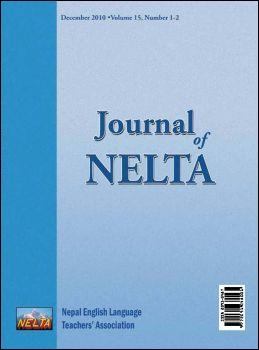Analysis of Spoken Discourse Pattern in Nepali ELT Classes
DOI:
https://doi.org/10.3126/nelta.v15i1-2.4606Keywords:
Discourse analysis, Spoken discourse, Discourse structure, Exchange, MoveAbstract
Among a multitude of study areas, discourse analysis has emerged as a fast-growing discipline because of growing interest of linguists in studying language in natural setting, as opposed to making analyses of artificially created sentences. A concentrated amount of work on discourse analysis in the past few decades has demonstrated that discourse in classrooms is highly organized and amenable to analysis. This paper is an attempt to make an analysis of such a naturally occurring classroom discourse based on Sinclair-Coulthard analysis model developed in 1975.This model has come as a significant contribution for those who are interested in the field of discourse analysis. The study suggests that there is use of a simple discourse pattern in Nepali higher secondary classes of English.
Key words: Discourse analysis; Spoken discourse; Discourse structure; Exchange;Move
Journal of NELTA
Vol. 15 No. 1-2 December 2010
Page: 22-27
Uploaded date: 4 May, 2011
DOI: 10.3126/nelta.v15i1-2.4606
Downloads
Downloads
How to Cite
Issue
Section
License
© Nepal English Language Teachers’ Association (NELTA)
Authors are required to transfer their copyright to the Nepal English Language Teachers' Association (NELTA)
The Journal of NELTA is copyright by Nepal English Language Teachers’ Association (NELTA). Apart from citing/referencing in academic works, no part of any materials may be reproduced by any process without prior written permission from its copyright owner – NELTA. Requests and enquiries concerning reproduction and rights may be addressed to NELTA or the editorial board at neltaeditorialboard@gmail.com.




